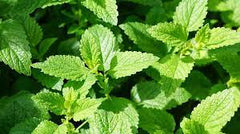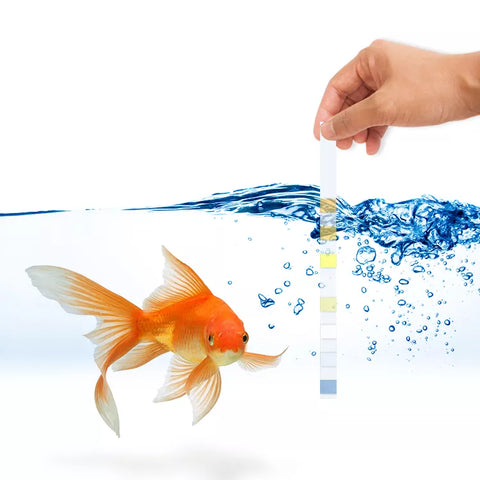When we hear "aquaponics," we think of vegetables and herbs grown with fish. But did you know that you can also utilize aquaponics systems to grow your favorite house plants?
Yes, it works! Although we usually associate aquaponics with growing vegetables like lettuce, tomatoes, strawberries, and herbs, many house plants can be grown in your aquaponics system.
House plants are a valuable addition to aquaponics systems, not only for their ornamental value but also for their significant contribution to the ecosystem's health. They absorb excess nutrients, filter water, and provide additional oxygen, which helps in creating a more balanced and thriving environment for fish and plants.
This article aims to guide aquaponics enthusiasts in selecting the best house plants for their systems. We will explore the various factors to consider when choosing house plants, from light and water requirements to growth habits to nutrient absorption capabilities.
Want a clear, step-by-step system for building your aquaponics setup? A 5-hour premium video coursewalks you through every stage, from system cycling to nutrient balancing.
The Benefits of Growing House Plants in Aquaponics:
- Improved Water Filtration: House plants act as natural water purifiers, and their roots can provide a substrate for beneficial bacteria to flourish and convert ammonia into nitrates.
- Enhanced Nutrient Absorption: House plants act as nutrient sponges that absorb the essential elements from the water and prevent nutrient imbalances.
- Aesthetic Appeal in Home Aquaponics Setups: House plants also contribute to the beauty of home aquaponics setups. Their lush green foliage and varied forms can transform the aquaponics system into a beautiful living, and breathing centerpiece.
- Diversified Yield: Integrating house plants expands the range of crops that can be cultivated in the aquaponics system, from herbs and leafy greens to fruit-bearing plants.
Factors to Consider When Choosing House Plants for Aquaponics
Selecting house plants that are well-suited to the specific conditions of the aquaponics system is crucial for its long-term success. House plants should be chosen based on their adaptability to the water parameters, light conditions, and growth habits. Below are some factors to consider when choosing the right house plants for your aquaponics system.
A. Light Requirements
1. Natural Light vs. Artificial Light:
- Consideration: Evaluate the available lighting conditions of your aquaponics setup. Some houseplants thrive in natural sunlight, while others are adaptable to artificial light sources.
2. Duration of Light Exposure:
- Consideration: Different house plants have varying light requirements regarding the duration of exposure. Some may thrive with longer hours of light, while others prefer shorter periods. Align the light exposure with the chosen plants' needs to ensure they receive the optimal amount of light for photosynthesis.
B. Water Preferences
1. Tolerance to Aquaponics Water Conditions:
- Consideration: Not all houseplants are resilient to the unique water conditions in aquaponics systems. Check the tolerance levels of potential plants to factors such as pH levels, nutrient concentrations, and the presence of fish waste. Opt for plants that can thrive in the symbiotic aquatic environment without stress.
3. Growth Habits
1. Size and Space Considerations:
- Consideration: Assess the available space in your aquaponics system and choose house plants that align with the designated area. Some plants have compact growth habits suitable for smaller setups, while others may require more space. Plan accordingly to avoid overcrowding and ensure efficient resource utilization.
2. Compatibility with Aquaponics Fish:
- Consider the growth habits of house plants concerning the behavior of the aquaponics fish. Plants with extensive root systems might provide hiding places for fish or contribute to the overall habitat structure. Ensure compatibility to foster a balanced and harmonious environment for both plants and fish.
4. Nutrient Absorption
1. Capability to Thrive on Fish Waste:
- Consideration: Choose house plants that can extract nutrients from fish waste. Look for species that can efficiently absorb nitrogen compounds, which enhances nutrient cycling in the system, contributing to a healthier and more productive aquaponics setup.
2. Contribution to Nutrient Cycling in the System:
- Consideration: Evaluate how effectively the selected house plants participate in the nutrient cycling process. Plants that actively uptake and utilize nutrients from fish waste contribute to the overall stability of the aquaponics system.
Top House Plants for Aquaponics

1. Peace Lily
The Peace Lily is renowned for its efficient absorption of nutrients in aquaponics systems. Its broad leaves provide an ample surface area for nutrient uptake and actively participate in nutrient cycling. This quality makes it a valuable addition to maintaining water purity and supporting the ecosystem's overall health.
One of the standout features of the Peace Lily is its adaptability to low-light conditions, which makes it an excellent choice for aquaponics enthusiasts who may have setups with limited natural light. The Peace Lily's ability to thrive in such environments ensures consistent growth and nutrient absorption even in shaded areas.

2. Basil
Basil adds flavor to your culinary endeavors and serves a dual function in aquaponics. This herb actively absorbs water nutrients, contributing to the nutrient cycling process. Its aromatic leaves make it a rewarding choice for those seeking practicality and culinary enjoyment from their aquaponics setup.
Basil's compact growth habits make it an ideal candidate for smaller aquaponics systems. Whether grown in floating rafts or vertical towers, basil's efficient use of space ensures that it can thrive in more confined environments.

3. Spider Plant
Beyond its aesthetic appeal, the Spider Plant is known for its air-purifying qualities, which enhance the system's overall health and create a cleaner environment for plants and fish.
The spider plant's resilience and adaptability make it an excellent choice for those new to aquaponics. It requires minimal care and is forgiving of fluctuations in water conditions, making the spider plant a beginner-friendly option for enhancing an aquaponics system's visual and functional aspects.

4. Mint
Mint brings a delightful aroma and flavor to the aquaponics environment. Beyond its sensory appeal, mint actively participates in nutrient absorption, utilizing fish waste to fuel its growth.
Mint is well-suited to aquaponics systems as it easily adapts to nutrient-rich water conditions, utilizing fish waste as a nutrient source. Its ability to thrive in these conditions ensures it can actively contribute to the nutrient-cycling process, promoting a healthy and balanced ecosystem.

5. Ferns
Ferns love having moist roots and thrive in aquaponics systems. They are easy to grow and like receiving moderate light daily, making them excellent house plants for indoor aquaponics systems. Although they are not aquatic plants, they thrive in water even if their leaves are partly submerged.
They grow huge and must be trimmed frequently to keep them from overtaking your system. They have low nutrient requirements and only need a little fish to grow and thrive.

6. Marigolds
Marigolds are ideal for aquaponics systems because they give your home a burst of superb color and help keep bugs away because of their pungent smell.
Marigold comes in different colors, so you can choose your favorite color and add it to your aquaponics garden. They are also one of the best flowering companion plants in aquaponics because of their natural pest-repelling properties.
Marigolds will thrive in your system if their growing requirements are met and nutrients are readily available.

7. Lavender
Lavender usually likes dry conditions in temperate zones and can be tricky to cultivate in humid regions. But as long as their growing requirements are met, they can be ideal in an aquaponics setup. In soil gardening, lavender can easily suffer from being over-watered. However, in an aquaponics system, they can thrive because it is a controlled setup with almost stable temperature, humidity, and lighting.

8. Chamomile
Although regarded as an herb, chamomile is an excellent plant in its own right and can be a great house plant or companion plant in your aquaponics garden.
Chamomile is good for keeping pests away; its white flowers add character to your home. The flowers can also be harvested and made into tea, with many health benefits.
How to Integrate House Plants into Aquaponics Systems
1. Design and Set Up the Aquaponics System:
Plan your system's layout, and consider factors such as available space, light exposure, and the size of the fish tank and grow beds. Set up the system components, including the fish tank, grow beds, and water circulation system.
2. Choose Suitable House Plants:
Select house plants based on the light conditions, nutrient requirements, and growth habits discussed earlier. Consider a mix of herbs, leafy greens, fruit-bearing, and house plants for a diversified and productive aquaponics system.
3. Prepare Growing Media:
Choose the best grow media for your plants, such asclay pebbles, lava rock, or gravel. Fill the grow beds with the chosen grow media and ensure proper aeration and drainage.
4. Establish Nitrogen Cycle:
Before introducing fish, establish the nitrogen cycle by system cycling, which allows beneficial bacteria to colonize the grow beds and convert fish waste into nutrient-rich water.
5. Introduce Fish:
Select the best fish species for aquaponics, considering factors like water temperature and compatibility with your chosen plants. Introduce fish to the system gradually to avoid stressing them.
6. Plant Placement:
Plant your chosen house plants in the grow beds. Consider their light requirements and growth habits. Place compact plants in smaller aquaponics setups and utilize vertical space for vining or trailing plants in larger systems.
7. Monitor and Adjust Water Parameters:
Regularly monitor water parameters such as pH, ammonia, nitrite, and nitrate levels. Adjust the fish feeding to maintain a balanced nutrient system and ensure the optimal conditions for fish and plants.
8. Prune and Harvest:
Implement a regular pruning and harvesting schedule to encourage healthy plant growth and prevent overcrowding. This also helps balance fish waste production and plant nutrient uptake optimally.
Care Tips for House Plants in Aquaponics Systems
A. Monitoring Water pH Levels:
1. Importance:
- Regular monitoring of water pH levels is crucial for the health of both house plants and fish in an aquaponics system. pH directly affects nutrient availability, and maintaining an optimal range ensures efficient nutrient absorption by plants.
2. Care Tips:
- Use a reliable pH testing kit to monitor water acidity regularly.
- Adjust pH levels as needed by adding pH-up or pH-down solutions to ensure they remain within the recommended range for plants and fish.
- Understand the specific pH preferences of the chosen house plants and fish species to make informed adjustments.
B. Regular Pruning and Maintenance:
1. Importance:
- Pruning is essential for managing the growth of house plants in aquaponics systems. It helps maintain an aesthetically pleasing arrangement, prevents overcrowding, and encourages healthier, more vigorous growth.
2. Care Tips:
- Regularly trim excess foliage and remove any dead or decaying plant material.
- Prune plants to shape them, prevent overcrowding, and ensure adequate light penetration.
- Inspect the roots periodically and trim if necessary to prevent overgrowth and maintain a balanced root system.
C. Observing Plant-Fish Symbiosis:
1. Importance:
- Observing the interaction between house plants and fish is essential for gauging the overall health of the aquaponics system. A thriving symbiotic relationship ensures optimal nutrient cycling and water purification.
2. Care Tips:
- Monitor the behavior of fish around plants; active fish interaction with plant roots indicates a healthy symbiotic relationship.
- Observe houseplants' color, size, and growth as indicators of their response to fish waste nutrients.
- Ensure that the chosen house plants contribute positively to the aquaponics system's well-being.
D. Addressing Potential Issues and Troubleshooting:
1. Importance:
- Early identification and resolution of potential issues are key to maintaining a successful aquaponics system. This proactive approach helps prevent larger problems that could negatively impact plant and fish health.
2. Care Tips:
- Regularly inspect plants for signs of nutrient deficiencies, pest infestations, or diseases.
- Act promptly to address any identified issues, whether adjusting nutrient levels, introducing beneficial organisms, or implementing natural remedies.
- Familiarize yourself with common aquaponics challenges and their solutions to troubleshoot effectively.

Troubleshooting Common Issues
1. Nutrient Deficiency:
If plants exhibit signs of nutrient deficiency, such as yellowing leaves, adjust the fish feeding regimen or supplement with aquaponics-friendly fertilizers to address the imbalance.
2. pH Fluctuations:
pH levels can impact nutrient availability. Regularly check and adjust pH levels as needed to ensure an optimal environment for fish and plants.
3. Overcrowding:
Overcrowded plant beds can lead to competition for nutrients and hinder overall growth. Thin out crowded areas and consider the mature size of plants when planning the aquaponics system.
4. Fish Health Issues:
Monitor fish behavior and health regularly. If issues arise, such as abnormal swimming patterns or color changes, address potential water quality issues promptly. Perform partial water changes if needed.
5. Algae Growth:
Algae growth in the system can compete with plants for nutrients. Control algae by ensuring adequate shading, optimizing plant light exposure, and maintaining proper nutrient levels.
Conclusion
Incorporating house plants into your aquaponics system is not only a smart way to enhance its beauty but also a practical method to improve water quality, oxygenation, and nutrient cycling. From peace lilies to spider plants, choosing the right plants can make a significant difference in the success and aesthetics of your setup.
Ready to take your aquaponics knowledge to the next level? Get our recommended Aquaponics Gardening Guide Video today!
This comprehensive resource walks you through everything you need to know, from system setup to plant and fish care, so you can build a thriving, sustainable ecosystem right in your home. Click the link and start growing smarter, greener, and more confidently!








Leave a comment (all fields required)